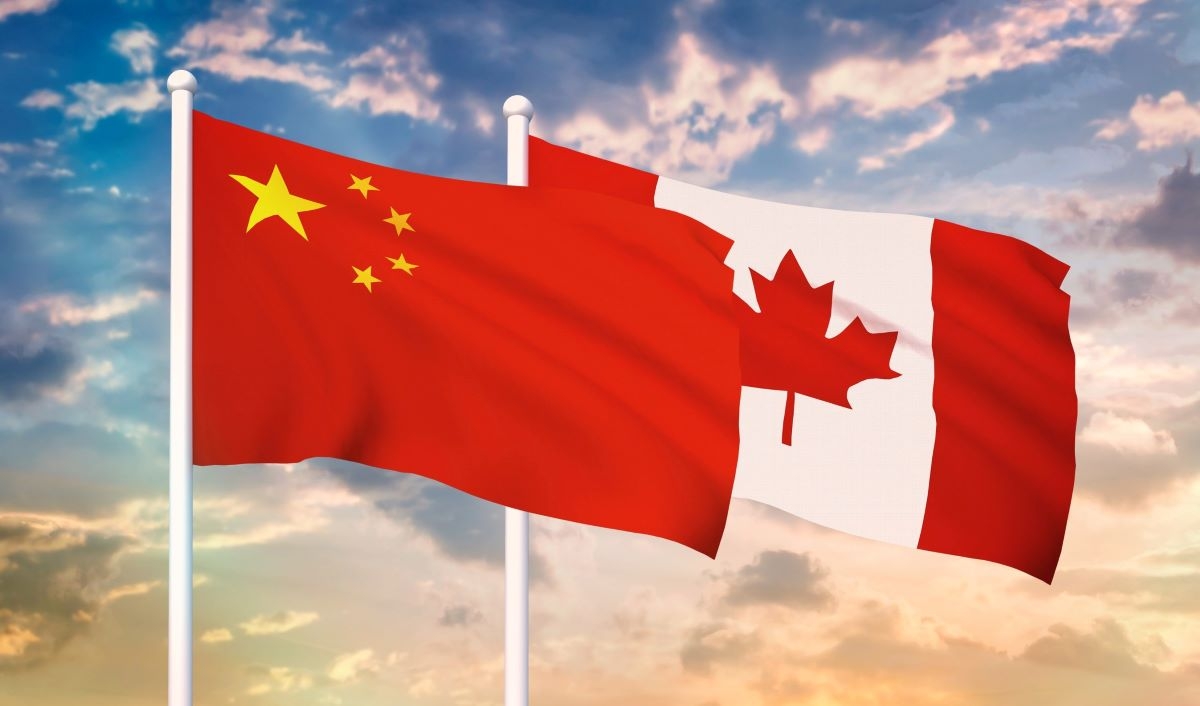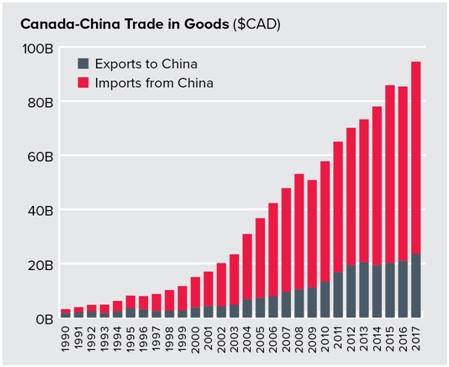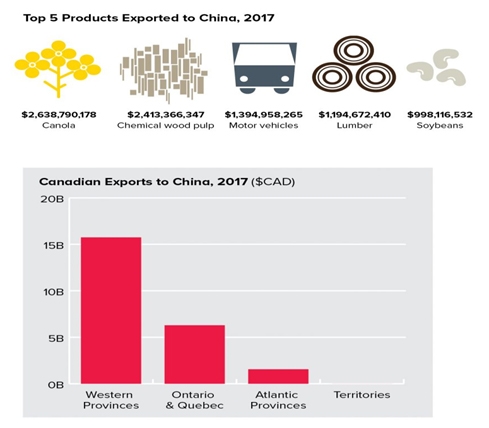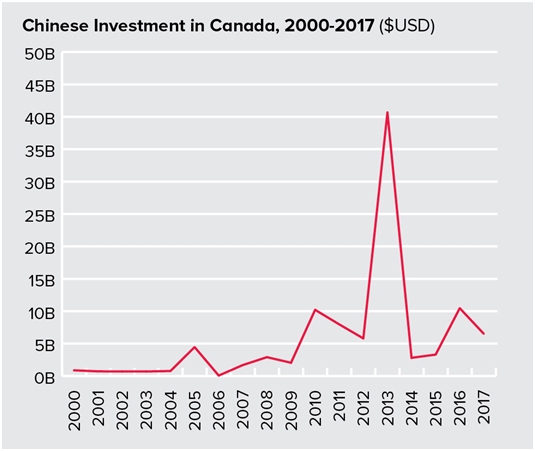
Canada and China’s relationship is vital
Ottawa Life Magazine has been publishing a Canada-China Series since 2013. The series focuses on bi-lateral interests, business affairs, people-to-people relations, Chinese culture and the Chinese diaspora in Canada. Since 2018 there has been tension in the Canada Chinese political relationship. Ottawa Life Magazine has continued and will continue to publish relevant information related to the bi-lateral relationship, including stories, columns and editorial features that present issues from the Chinese perspective, as well as from the Canadian government and other Canadian stakeholder points of view.
It would be an understatement to say that Canada and China are going through a difficult and tumultuous period on the 50th Anniversary of diplomatic relations between the two countries. China is upset with Canada over what they believe is the illegal detention of Huawei executive Meng Wanzhou who was arrested and detained via an extradition treaty in December 2018 at the request of the American government.The Chinese government have called her detention a ‘kidnapping’. The Canadian government is equally upset with China over what it considers the illegal detention and ‘kidnapping’ ten days later in China of Canadians Michael Spavor and Michael Kovrig (the two Michael’s) which they claim is retaliation for the Meng arrest in Canada.
The Canadian government has done nothing for two years to improve the situation.Prime Minister Trudeau and the Liberal government have no coherent Canada-China strategy or policy other than to continue to flail about with an incendiary invective against China that is making things worse, not better. Their superiority narrative about China having an inferior system to the ‘rule of law’ system in western democracies is viewed by the Chinese as inherently racist and one that harkens back to the western powers’ treatment of China in the 18th and 19th and 20th Century. That the Trudeau government does not recognize this, is a very serious problem.
Former Prime Ministers Brian Mulroney, Jean Chretien, John Turner and multiple other distinguished Canadians have called on Prime Minister Trudeau to release Meng Wanzhou and to repair the rift with China. Trudeau — for some inexplicable reason — has ignored this advice. Erin O’Toole and the Official Opposition have doubled down on the negativity towards China with regards to the 'Meng-two Michaels’ affair, but at least O’Toole has come out with a coherent policy regarding how he would approach China if he were Prime Minister. He views China as an adversary to Canada and the western world. The facts remain that China is not the west and China does not want to be the west. China is China and their system is dramatically different from ours.
Any step to resolving the current Canada-China stalemate must start with Canada cooling its anti-China rhetoric and instead, focus on finding a way get Ottawa and Beijing relations back on track based on mutual respect and dialogue. It is in our national interest to do so. China should not be treated as Canada’s enemy or adversary and to do so if fundamentlay flawed and misguided. There is much benefit for both countries in engaging in a positive relationship that both recognizes and respects our differences.
Prior to the Canada-China relationship hitting rough waters in 2018, the Canada West Foundation (CWF) published a paper by Sarah Pittman titled the What Now?, an analysis related to China and its relationship with Canada.
The paper clearly showed the importance China plays in Canada's growing economy and continued prosperity. Even though there is no free-trade agreement between our countries, China is Canada’s second second-largest trading partner. In the past decade, Canada’s trade with China has doubled. In 2017, nearly $100 billion worth of goods was traded between Canada and China — compared to $48 billion in 2007. Economically, the relationship is more important for Canada with a population of 38 million people versus China with a population of 1.4 billion people and the world’s second largest and fastest growing economy. China is also Canada’s 20th largest export market, and 19th largest source of imports.

Source: cfw.ca
According to CWF, in 2017, China invested C$8.4 billion in Canada in consumer products, entertainment, oil, and real estate. A record of 682,000 Chinese tourists visited Canada in 2017 alone. China is Canada’s third largest source of tourists generating roughly $1.5 billion in revenue from Chinese tourists alone. Thirty-two percent of all foregin students studying in Canada are from China (187,000 students). Chinese foreign student education in Canada generated $11.6 billions revenues for Canada in tuition fees,lodging and other revenues in 2018.
In her paper for the CWF Pittman points out that trade between China and Canada has grown for decades. "When good political decisions are made, it grows even faster. These political decisions can be bilateral, between Canada and China, or on a global scale."
Pittman identified these key markers in the relationship between Canada and China:
- Late 1930s: Canadian Norman Bethune was a doctor for the Communist Party during the Chinese Civil War. While this was not a political decision, Bethune is still highly regarded across China, and this has positively influenced the political relationship between Canada and China.
- 1961: Canada exports wheat to China – nine years before diplomatic relations were established.
- 1970: Establishment of diplomatic relations with China. Canada was one of the few Western countries to recognize China at that time.
- 2001: China joins the World Trade Organization. This integrated the Chinese economy far more into the global market, and the result was increased global trade.
- 2000s: During the Harper years – when relations between the two countries were widely seen as cold – trade between the two countries grew an astounding 103 percent!
- 2014: Canada and China signed a Foreign Investment Promotion and Protection Agreement (FIPA), which helps the foreign investor receive the same treatment as the domestic investor. This was very much at the urging of Canadian business owners. According to the China-Canada Investment Tracker, Chinese investment in Canada was up nearly $500 million in 2015 from 2014, a 17 per cent increase.
Each country has things that the other country needs. Because of supply and demand, trade between the two countries has almost continually risen. For example, China imports a lot of canola, mainly to use as oil and in animal feed; Canada, meanwhile, has the right conditions – and space – to grow canola. In 2017, Canada exported $3.6 billion worth of canola to China. As a result of Chinese action over the Meng arrest, canola exports from Canada to China have since collapsed severely hurting Canada’s canola farmers.
CWF also notes that trade has grown and can continue to grow substantially even without a free trade agreement. Even though Canada is in a free trade agreement with the USA and Mexico, Canada's trade with Mexico remains flat; at the same time Canada hasn't signed a trade agreement with China and trade continues to grow.
Chinese trade opportunities are important to Western Canada.In 2017, British Columbia, Saskatchewan, and Alberta were the top three exports to China ($6.8 billion, $3.9 billion, and $3.5 billion respectively). Of the top five items in Canada exported to China, four of them are widely produced in the four Western provinces (motor vehicles are the exception).

Source: cfw.ca
According to the CWF, as demand from China continues to grow,opportunities for Western Canada will continue to grow, particularly food and natural resources. China’s largest food import is soybeans and until the current diplomatic crisis, Canada’s soybean producers were feeding this demand. "In 2016, China imported more than $32 billion worth of soybeans. In addition to these staples, Canadian businesses can also take advantage of China’s diversity and modernization. For example, the Canadian Prairies are poised to take advantage of the emerging plant ingredients industry and could export significant amounts of food ingredients, like pea protein or hemp fibre, to China,” says Pittman.
All of this is now in doubt due to the current diplomatic spat. As Western Canada continues to be blungeoned by the misguided energy policies of the Trudeau government, they face the addiitional calamity of even more damage to their economy as a result of the Trudeau government spat with China. This is not helping anyone, especially farmers and resource people in Alberta and Saskatchewan who have cultivated strong business and trade ties with the Chinese domestic market over the past several decades.

* The spike in 2013 can partially be explained by Chinese company, China National Offshore Oil Corporation (CNOOC) acquiring Canadian oil company Nexen for more than $15 billion. Source: China-Canada Investment Tracker, China Institute, University of Alberta
The economic relationship between China and Canada was excellent prior to 2018. The current diplomatic crisis has taken it off the rails. Both Canada and China will benefit if we can move forward with clear lines and a policy of respecting each other's differences. It is time to settle the dispute between our country’s and to begin a pathway of bi-lateral economic renewal.
Please refer to What Now?, by Sarah Pittman, the Canada West Foundation
Header image: iStock













